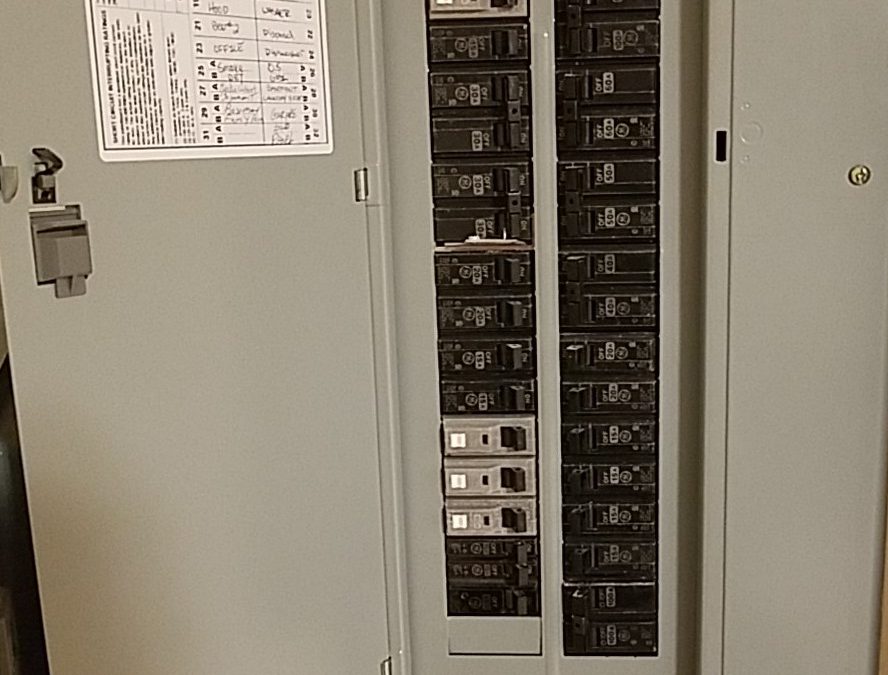All homeowners should know where their electrical panel is located. When you open the door to it, you should find breakers that are labeled which correspond to the different rooms or areas of the home. Breakers will sometimes trip due to a power surge or outage, and the homeowner can flip the switch to reactivate the current to the particular room or area. Behind the breakers is the dead front, and it is this electrical component that should be removed only by a qualified electrician or inspector. The following tips and information can improve safety when accessing the electrical panel.
Before touching the electrical panel to re-set a breaker, ask yourself the following questions for safety:
- Do I have an escape path? Make sure that you know where you can safely turn or step if you must escape a dangerous surprise, such a bee or a spark. An unfortunately placed shovel or extension cord, for instance, can turn a quick jerk into a dangerous fall.
- Is the floor wet? Never touch any electrical equipment while standing on a wet surface!
- Does the panel appear to be wet? Check overhead for dripping water that may have condensed on a cold water pipe.
- Is the panel rusty? Rust is an indication of previous wet conditions that may still exist.
- Are there scorch marks on the panel door? This can indicate a past or very recent arc, and further investigation should be deferred to a licensed electrician.
Here is a list of defective conditions that a homeowner may see that may be called out during an electrical inspection. Each has an impact on safety:
- insufficient clearance. According to the 2008 National Electrical Code, most residential electrical panels require at least a 3-foot clearance or working space in front, 30 inches of width, and a minimum headroom clearance of 6 feet, or the height of the equipment, whichever is greater.
- sharp-tipped panel box screws. Panel box cover screws must have blunt ends so they do not pierce the wires inside the box.
- circuit breakers that are not properly sized.
- oxidation or corrosion to any of the parts. Oxidized or corroded wires will increase the resistance of conductors and create the potential for arcing.
- damage caused by rodents. Rodents have been known to chew through wire insulation in electrical panels (and other areas), creating an unsafe condition. Rodents have been electrocuted this way, leaving an unsightly mess inside the panel.
- evidence of electrical failures, such as burned or overheated components.
- evidence of water entry inside the electrical panel. Moisture can corrode circuit breakers so that they won’t trip, make connections less reliable and the equipment unsafe to touch.
- a panel manufactured by Zinsco or Federal Pacific Electric (FPE). These panels have a reputation for being problematic, and further evaluation by a qualified electrician is recommended.
For more home-maintenance tips, please click here https://greydoginspections.com/blog/
To learn more about Grey Dog Home Inspections, LLC, please click here https://greydoginspections.com/


Recent Comments